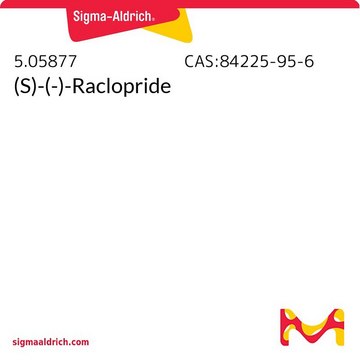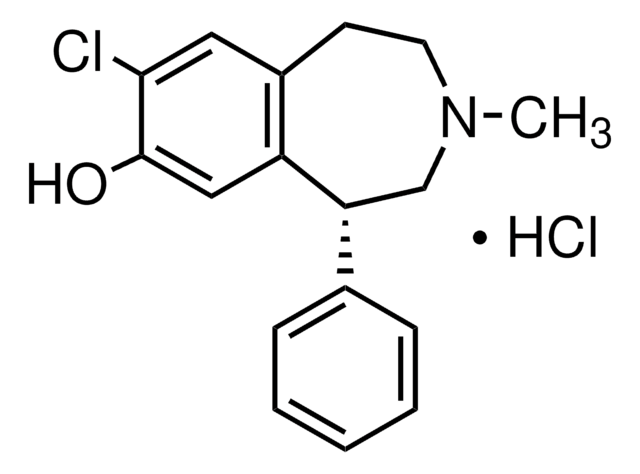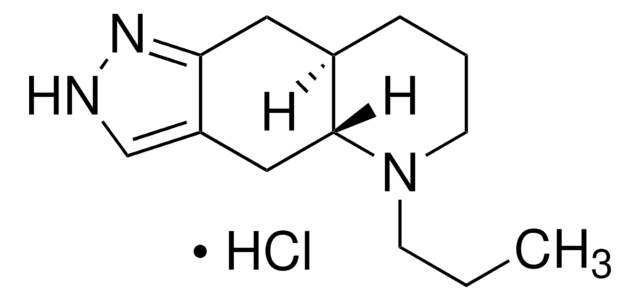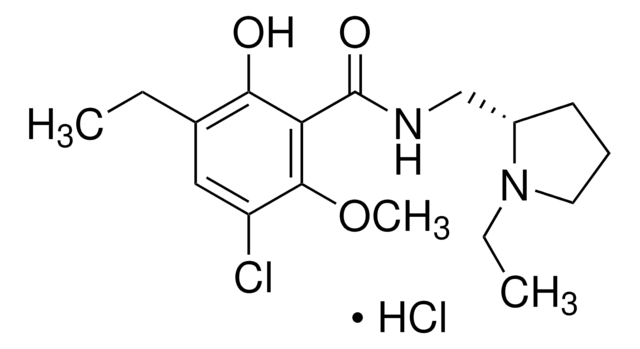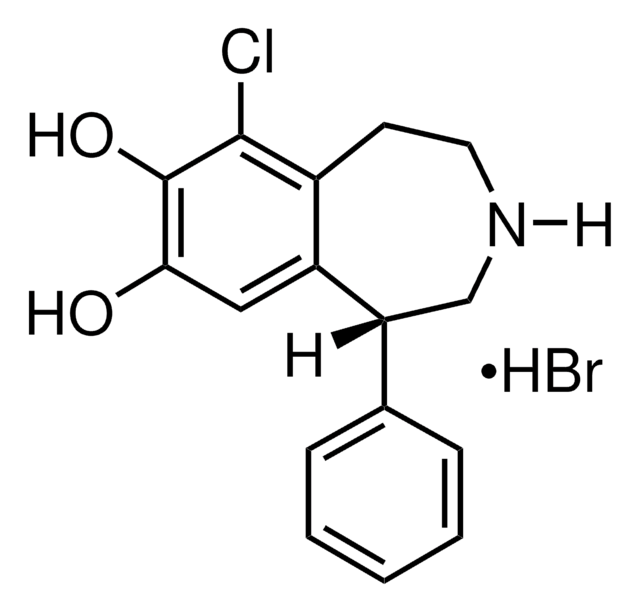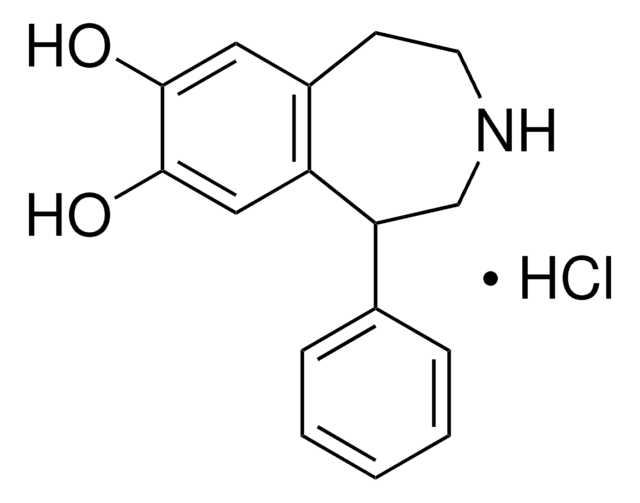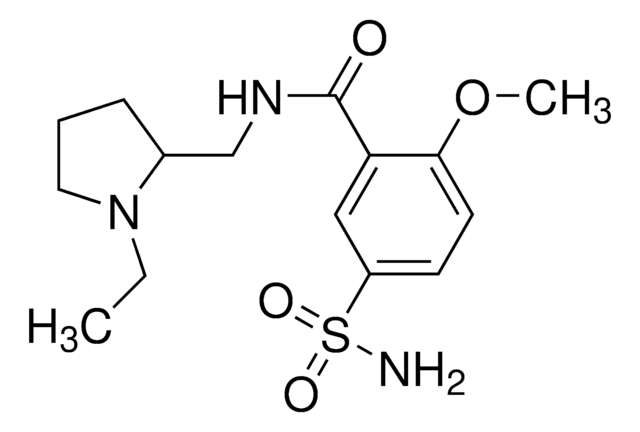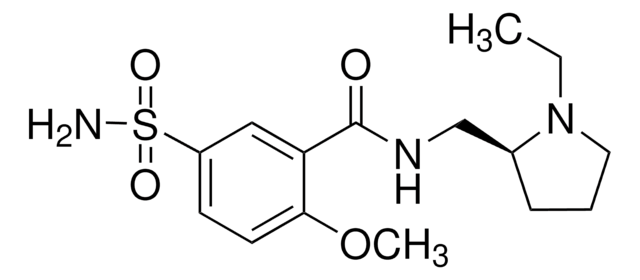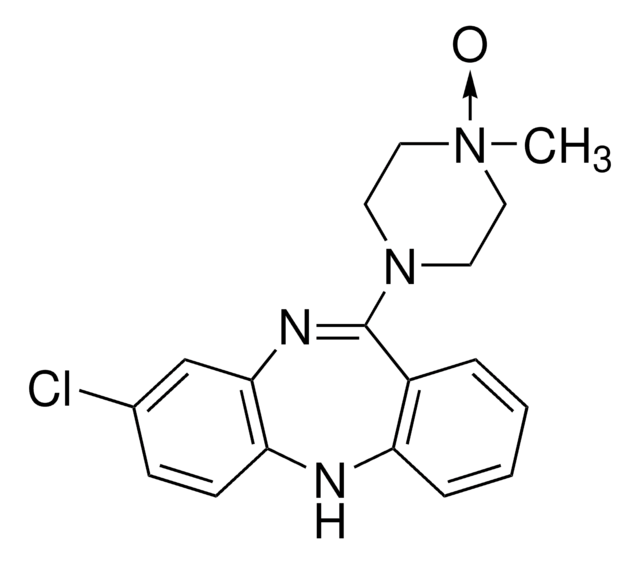Kluczowe dokumenty
R121
S(−)-Raclopride (+)-tartrate salt
>97%, solid
Synonim(y):
3,5-Dichloro-N-(1-ethylpyrrolidin-2-ylmethyl)-2-hydroxy-6-methoxybenzamide (+)-tartrate salt
About This Item
Polecane produkty
Próba
>97%
Formularz
solid
kolor
white
rozpuszczalność
H2O: 89 mg/mL
ciąg SMILES
O[C@H]([C@@H](O)C(O)=O)C(O)=O.CCN1CCC[C@H]1CNC(=O)c2c(O)c(Cl)cc(Cl)c2OC
InChI
1S/C15H20Cl2N2O3.C4H6O6/c1-3-19-6-4-5-9(19)8-18-15(21)12-13(20)10(16)7-11(17)14(12)22-2;5-1(3(7)8)2(6)4(9)10/h7,9,20H,3-6,8H2,1-2H3,(H,18,21);1-2,5-6H,(H,7,8)(H,9,10)/t9-;1-,2-/m01/s1
Klucz InChI
QULBVRZTKPQGCR-NDAAPVSOSA-N
informacje o genach
human ... DRD2(1813)
Zastosowanie
- to study the role of the D2 receptor in mediating ventrolateral PAG (vlPAG)/dorsal raphe dopaminergic antinociceptive effect in animals
- in pharmacological and behavioral studies performed with Thap1 null mice
- to determine the relationship between Ca2+ transients and dopamine neuron activity in rats
Działania biochem./fizjol.
Opakowanie
Przestroga
Kod klasy składowania
11 - Combustible Solids
Klasa zagrożenia wodnego (WGK)
WGK 3
Temperatura zapłonu (°F)
Not applicable
Temperatura zapłonu (°C)
Not applicable
Środki ochrony indywidualnej
Eyeshields, Gloves, type N95 (US)
Wybierz jedną z najnowszych wersji:
Masz już ten produkt?
Dokumenty związane z niedawno zakupionymi produktami zostały zamieszczone w Bibliotece dokumentów.
Klienci oglądali również te produkty
Nasz zespół naukowców ma doświadczenie we wszystkich obszarach badań, w tym w naukach przyrodniczych, materiałoznawstwie, syntezie chemicznej, chromatografii, analityce i wielu innych dziedzinach.
Skontaktuj się z zespołem ds. pomocy technicznej